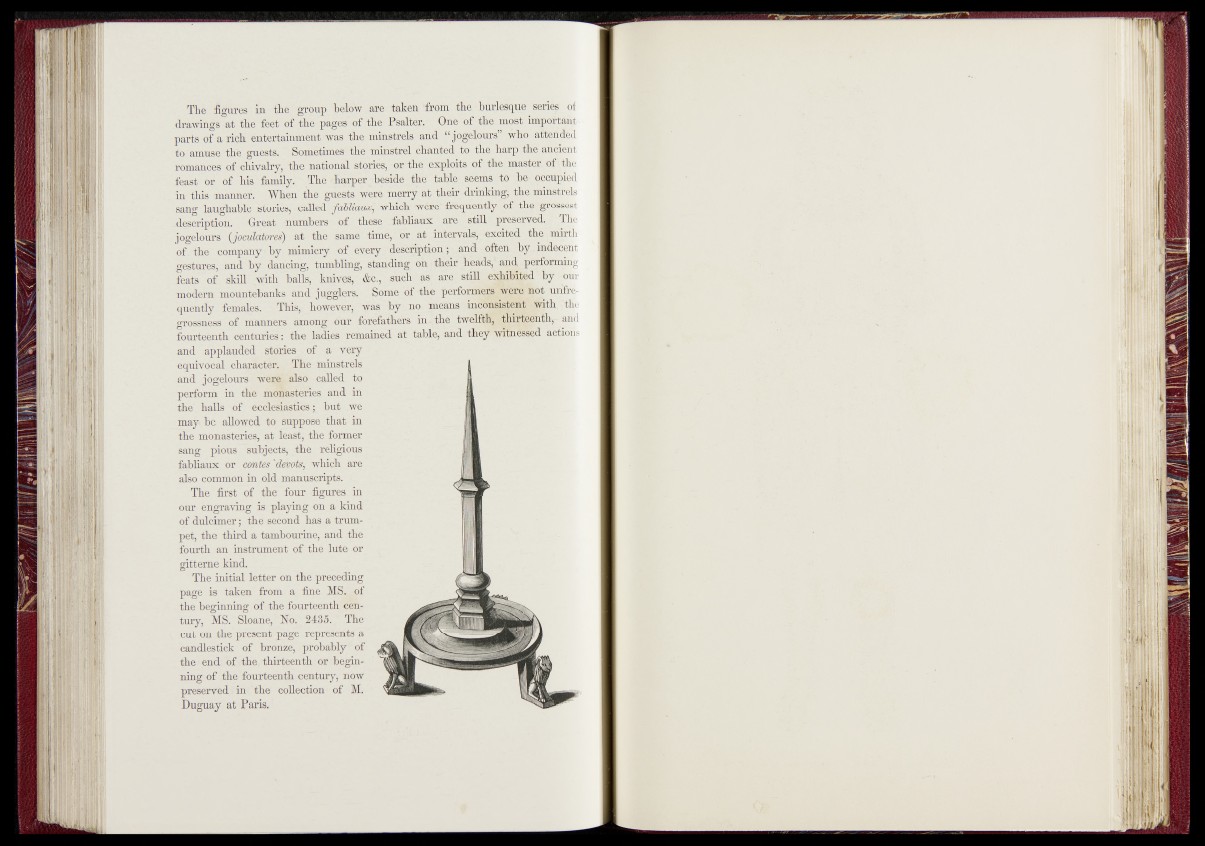
The figures in the' group 'Mow are taken fromjth e buidesque. serie^M
.drawings a t f i e ^ e t ' of the page» of thefjjalter. O n e l^ tifym ost ■
parts of a rich enMtaihment'was and B g ^ ^ H g p
to..amuse the.guests. ^'SoAfetbn^.^ g m mstMR an ted
romances'll “ Ghiy airy, the national -stories, mr tfie^b^lpj-ts o^j%ei piaster, -of' Be
feast or of fhii family;' The sharper^hesidejfehe' .fable seems ^ -b e ^ f ^m e d
in fMMnanner. When the-gujeSts'were inerry a t^ |a ^ d r« firi^ g ;^ ^ ^ n stm s
sang laughable stories/^s^edbjfe5&‘aMa‘, wbibb'~were frequently^o’f tb^^^ossest
-description. '.Great 'numbers^ of ^ these .fabliaux afe^jstilbKpreserved.^ The
ab|^butij (joGulatores) at the same’ time,' br^ a t , internals,-^exeited ■ thepdiirth
^ofef^CiCompany’ by, mimicry -of .every description nlaHd^Qffen/..bjra jH ^ enti
gestures, and by dating, tumbling, standing, obj their jxeads,^aM^^brncdng
feats ^of »trill M f^ lb a ll^ knives, &c., silcb aS( are; stij| eglj|feed by B r
modern mountebanks and. jugglers. Some of -the p e r f o r ^ B % ^ J o t. uipe-
quently femde^^Chis^ however, 'wa s'by .najme'ans’ i n d ^ ^ ^ ^ ^ i t h , l i e
'.grossness -p£ manners among our forefathers in^the ‘twel^^^^^i^dh.th,- ||[id
fourteenth .centuries": the ladies -renamed at fable^’^ ^ the^^uKiesrefed g||pohs
and - applauded stories of a very I
equivocal cbaract^^, The minstrels
and jogelours were^also called to
perform in the monasteries and in
the. halls of ecclesiastics; but .we
may be allowed to suppose that in
the monasteries, at least, the former
sang pious subjects, the religious]
fabliaux or contes 'devots, which! are]
also common in old manuscripts. •
The first of the four -figures in
our engraving is playing on a kind
of dulcimer ; the second has a trumpet,
the third a tambourine, and the
fourth an instrument of the lute-or
gitteme kind. ‘
The initial ietter on the preceding
page is taken from a fine MS, .gpf
the beginning of the fourteenth century,
MS. Sloane, No. .2435. The
cut on thepresent page represents a
candlestick of bronze, probably - of
the.1 end ’of-the, thirteenth or beginning
of the fourteenth century, now
preserved > in the collection of M.
Dugiiay at Paris,